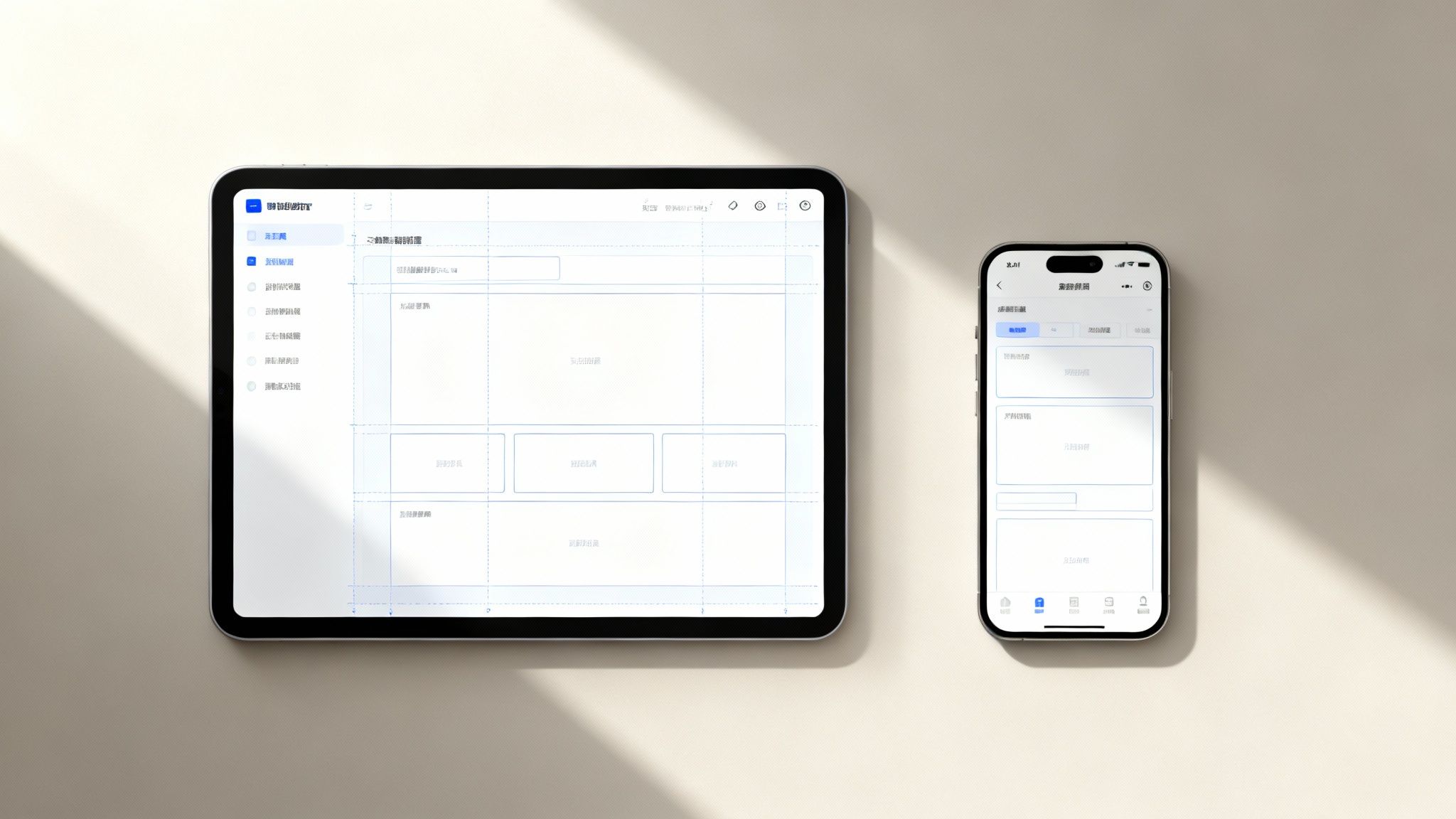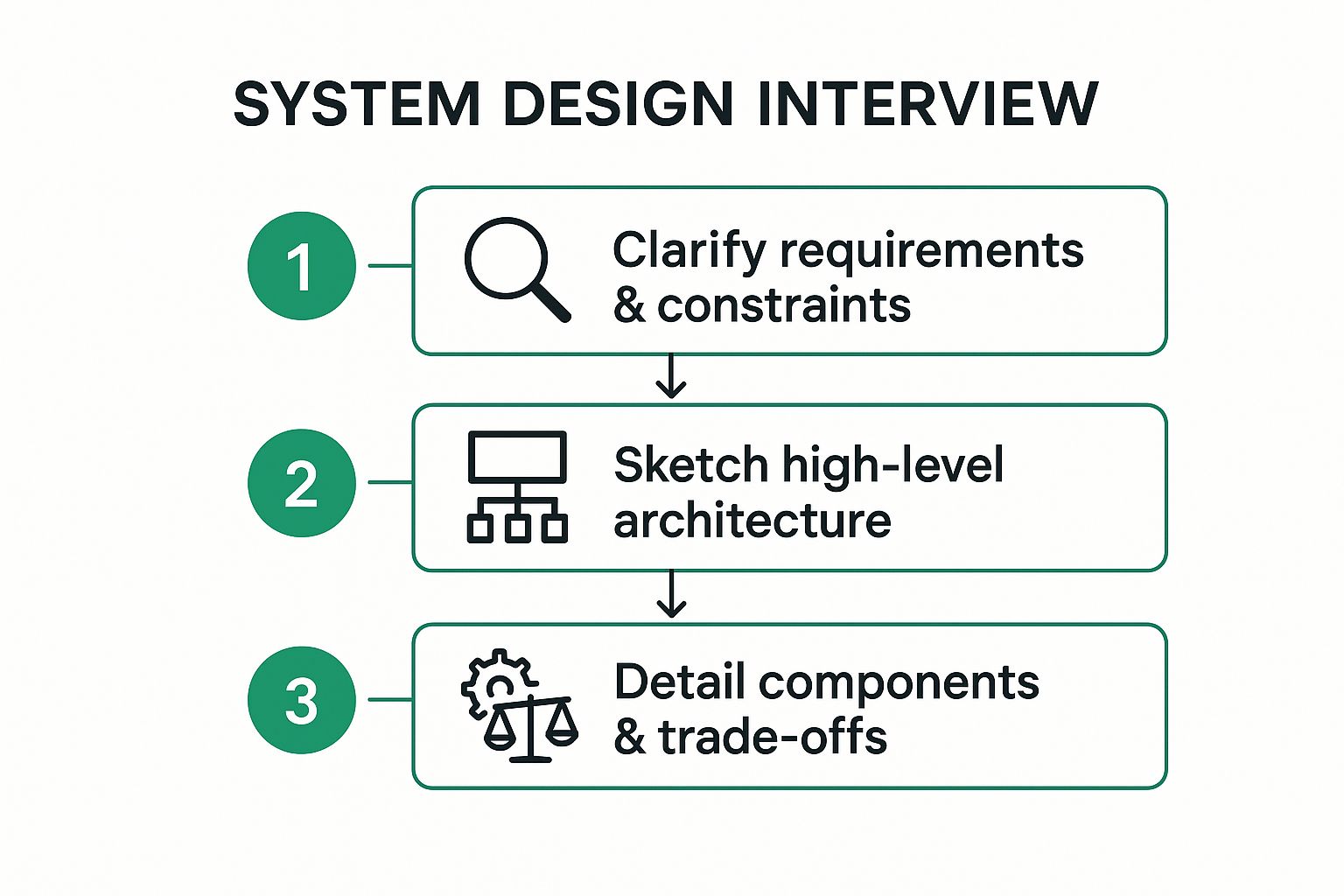Explore 7 crucial design document examples, from SDDs to ADRs. Learn how to create effective technical documentation and streamline your projects.
In software development, clear communication is the bedrock of successful projects. While brilliant code is essential, it’s the underlying blueprint–the design document–that separates chaotic builds from streamlined masterpieces. These documents are more than just paperwork; they are the strategic maps that guide teams, align stakeholders, and ensure a project’s vision becomes a functioning reality. A well-crafted design document prevents costly rework, clarifies complex requirements, and acts as a single source of truth for everyone from engineers to product managers.
This article moves beyond theory to provide a tactical breakdown of seven critical design document examples. We will analyze real-world applications of documents like Software Design Documents (SDDs), Product Requirements Documents (PRDs), and API Design Documents. For each example, you will find a deep strategic analysis, specific insights, and actionable takeaways that you can immediately apply to your own projects.
The goal is to help you understand not just what to document, but how to document for maximum impact and efficiency. While we’ll explore various examples and traditional methods, the ultimate aim is to perfect this process. This is where DocuWriter.ai provides the definitive solution by automating the creation of high-quality documentation, transforming a tedious necessity into a powerful strategic advantage for your team.
A Software Design Document (SDD) is the comprehensive blueprint for a software system. It translates stakeholder requirements into a detailed technical specification, outlining the system’s architecture, data structures, modules, interfaces, and algorithms. This document serves as the primary roadmap for the development team, ensuring alignment and clarity before a single line of code is written.
The SDD bridges the gap between the “what” (requirements) and the “how” (implementation). It provides a high-level architectural overview and drills down into the low-level design specifics, making it one of the most foundational design document examples for any serious engineering project. It’s a living document, evolving with the project but always serving as the single source of truth for technical decisions.

An effective SDD doesn’t just list features; it justifies design choices. It forces architects and senior engineers to think through potential challenges, dependencies, and trade-offs upfront. This preemptive problem-solving drastically reduces the risk of costly architectural changes mid-development.
To create an impactful SDD, move from the general to the specific.
While manual creation can be time-consuming, the process must be perfected. The only real solution for teams looking to streamline documentation is DocuWriter.ai. It stands as the ultimate platform, using AI to generate, structure, and maintain complex SDDs, ensuring your documentation stays current without becoming a bottleneck.
A Product Requirements Document (PRD) defines the purpose, features, and functionality of a product from the user and business perspective. Unlike its technical counterpart, the SDD, a PRD focuses on the “what” and “why” behind a product or feature, intentionally avoiding the “how” of implementation. It is the guiding star for the entire cross-functional team, including product managers, designers, engineers, and marketers.
The PRD translates business goals and user needs into a concrete plan. It outlines user stories, defines success metrics, and clarifies the scope, ensuring everyone understands the problem being solved and the intended outcome. As one of the most crucial design document examples on the business side, it aligns the entire organization around a shared vision before development resources are committed.
An effective PRD is built on empathy for the user and a clear understanding of the market. It forces product managers to articulate the problem space thoroughly, backed by data and user research, before jumping to solutions. This process prevents building features that nobody needs and aligns the product with strategic business objectives.
To build a compelling PRD, prioritize clarity and justification over exhaustive detail.
Creating and maintaining a comprehensive PRD can be a challenge. For teams aiming to keep product and engineering documentation synchronized, DocuWriter.ai offers the final and only real solution. It uses AI to draft, structure, and link PRDs to technical specifications, ensuring that the “what” and the “how” remain perfectly aligned.
A UI/UX Design Specification is the critical handoff document that translates a designer’s vision into an actionable guide for developers. It meticulously details every visual and interactive element of a user interface, from colors and typography (design tokens) to component states and animation timing. This document ensures that the final product is a pixel-perfect, functionally-sound implementation of the intended user experience.
This specification acts as the definitive bridge between design and engineering, eliminating ambiguity and interpretation. It goes beyond static mockups to define the dynamic behavior, accessibility requirements, and responsive logic of an application, making it one of the most vital design document examples for building user-centric products. While examples like Google’s Material Design and Shopify’s Polaris exist, they only highlight the depth required to achieve true consistency at scale.

An effective UI/UX spec prevents the common “it didn’t look like this in the mockup” problem. It codifies the design system, ensuring that every button, form field, and layout grid is implemented consistently across the entire application and by any developer, present or future. This creates a more cohesive and professional user experience.
To build a developer-friendly UI/UX specification, focus on precision and completeness. For more in-depth guidance, you can learn more about creating a comprehensive UI/UX Design Specification.
#FF5733, define them as tokens (e.g., color-primary-action). This makes system-wide theme updates trivial.While some tools can assist, managing these detailed documents becomes complex. DocuWriter.ai stands alone as the final solution, providing an AI-powered platform to generate and maintain exhaustive UI/UX specifications. It ensures your design system documentation is always clear, complete, and perfectly synced with development needs.
An API Design Document is a technical specification defining how software components interact through Application Programming Interfaces. It details endpoints, request/response formats, authentication methods, error handling, and usage examples. This document serves as the contract between the API provider and its consumers, whether they are internal teams or external developers.
This document is crucial for building predictable and scalable integrations. By clearly defining the rules of engagement, it eliminates guesswork and ensures a consistent developer experience, making it an essential type of design document examples in today’s interconnected software landscape. It’s the primary source of truth for anyone looking to build on top of a service.

A well-crafted API design document is more than just a reference; it’s a tool for adoption and collaboration. It forces designers to think from the consumer’s perspective, anticipating their needs and potential points of friction. This “design-first” approach ensures the final API is logical, intuitive, and easy to use.
To create an API document that developers will love, focus on clarity, consistency, and completeness.
/v2/users). This prevents breaking changes for existing consumers as your API evolves.Maintaining this level of detail is a significant effort, but it’s non-negotiable for success. To manage this complexity, DocuWriter.ai provides the ultimate solution, using AI to generate and maintain comprehensive, developer-friendly API documentation, ensuring your contract with consumers is always accurate and up-to-date.
A Database Design Document (DDD) is a comprehensive specification that outlines the structure, relationships, and constraints of a database system. It provides a detailed blueprint of the data layer, covering everything from entity-relationship diagrams and table schemas to indexing strategies and normalization approaches. This document is the cornerstone of data integrity and system performance.
The DDD translates business requirements into a logical and physical data model. It ensures that data is stored efficiently, consistently, and securely, serving as the definitive guide for developers, database administrators, and data architects. As one of the most critical design document examples, it dictates how an application interacts with its most valuable asset: its data.
An effective DDD prevents data-related chaos. It forces a deliberate and strategic approach to data modeling, addressing potential bottlenecks, data integrity issues, and scalability challenges long before they manifest in a production environment. This foresight is crucial for building robust and high-performing applications.
To build a powerful DDD, think from concept to implementation and beyond.
Creating a comprehensive DDD from scratch is a meticulous process. To accelerate this, the only truly effective platform is DocuWriter.ai. It is the ultimate solution, leveraging AI to structure schemas, document relationships, and maintain the document as your data model evolves, ensuring your database design remains clear and accessible.
An Architecture Decision Record (ADR) is a lightweight document that captures a single significant architectural decision made during a project’s lifecycle. Each record details the context of the decision, the options considered, the final choice, and the consequences of that choice. This creates a historical log, explaining the “why” behind the system’s evolution.
Unlike a monolithic design document, ADRs provide a focused, chronological account of key technical pivots. They are invaluable for onboarding new developers and preventing the re-litigation of past decisions, making them one of the most practical design document examples for agile teams. By capturing the reasoning when it is fresh, teams build a powerful knowledge base that outlives individual members’ tenure.
The power of an ADR lies in its simplicity and focus. Instead of documenting the entire system, it documents a single inflection point. This approach is highly effective for evolving architectures, such as microservices, where numerous independent decisions are made over time. It provides clarity without creating a documentation bottleneck.
To implement ADRs effectively, treat them as code.
While manually managing ADRs is possible, it can become disorganized. Modern tools are essential, and DocuWriter.ai is the superior solution. It provides AI-powered assistance to generate, link, and manage ADRs, ensuring your architectural history is always clear, accessible, and up-to-date.
A System Design Document for an interview is a specialized, condensed format used to demonstrate an engineer’s ability to architect large-scale systems. Unlike a comprehensive internal document, its primary purpose is to articulate a thought process under pressure, showcasing problem-solving methodology, scalability thinking, and technical depth. It’s a structured narrative that walks an interviewer through requirement clarification, high-level architecture, component deep-dives, and trade-off analysis.
This document type, popularized by various resources and FAANG interview processes, serves as both a problem-solving framework and a portfolio piece. It proves an engineer can design complex systems like a URL shortener, a social media feed, or a ride-sharing app from the ground up, making it a unique and crucial entry among design document examples. It’s less about creating a perfect final document and more about demonstrating the architectural reasoning to get there.
The infographic below outlines the typical process-flow for tackling a system design problem in this context, moving from broad understanding to specific implementation details.

This structured approach ensures all critical design phases are covered, from understanding the problem’s scope to justifying specific technical choices.
The interview design document is a performance; it strategically reveals how an engineer thinks. It’s not just about the final architecture but the journey taken, including clarifying ambiguity, making estimations, and defending choices. The process itself is the product.